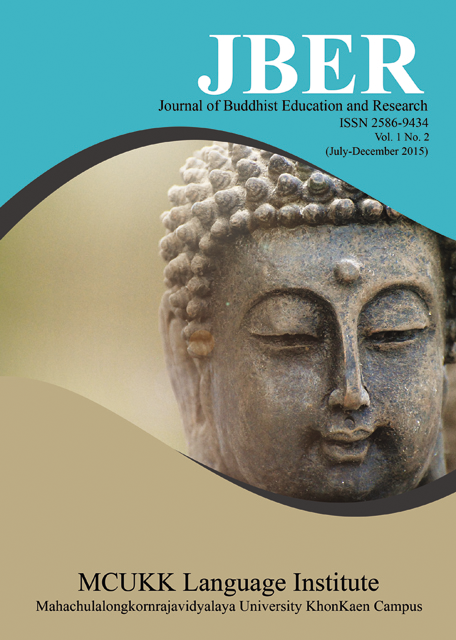Propagating Buddhism in the Digital Age
คำสำคัญ:
Propagation, Buddhism, Digital Ageบทคัดย่อ
The teachings of the Buddha had served beneficial to all human beings. The Buddha taught people by means of oral tradition. Later that it was transmission several traditions and periods; the first period, it was the oral transmission from face to face from Buddha and his followers by journey and teach person by person, place to place by his own word. After his passing away, all his teachings were memorized by his disciples and they still kept with the oral traditional transmission until the third rehearsal of recheck the teaching of Buddha. The second period, it was the development of oral transmission into writing system in order to preserve the Dharma words of the Buddha, when the Fourth Rehearsal was conducted at in Sri Lanka. It started continually from the period of Aksoka till the third and fourth rehearsal in Sri Lanka. This period was the biggest changing from oral transmission to text palm leave to record the Buddha’s teaching. The third period; it was started from the period of palm leaves to printing text book, which was the easier preserving and spread to many countries such as Europe and Western world as well as Asia. The fourth period; it was changed from text book to CD record and later on shortly, all teachings were uploaded to internet. This period was the biggest change of the Buddha’s teaching, because all information of teachings was upload to world wide web where everyone able to study online and everywhere every time and any devices such as smart phones etc. All people able to access reading or practice Buddha’s teaching by just connect with internet.
To teach or propagate Buddhism in the digital era will be the age of globalization of studying and very effective daily life, there is no barrage between people and information. There are several channels where can support us to spread and teach the Dharm of Buddha such as www.youtube.com, www.facebook.com, Line application, twitter etc. All these medias play very important role and useful to instructor as open class online. Thus, we should be mindful that as life online and offline become ever-more entangled, understanding religious life and practice will require serious engagement with both physical and virtual spaces.





